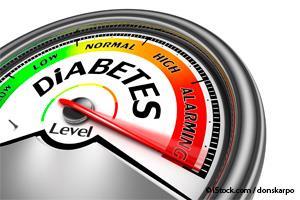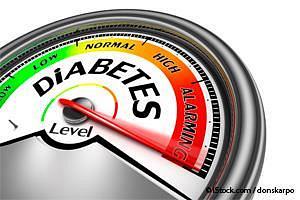Full-Fat Cheese Has Many Health Benefits, Including Weight Loss
Trading saturated fats for added sugars and trans fats
in our diet is among the worst lifestyle alterations to occur in modern
history. We now know this is a recipe for obesity, heart disease,
cancer and other chronic diseases.1,2
Many of these illnesses are now showing up in children, who are exposed
to these ingredients even prior to birth through their mothers' diets.
The preponderance of research shows that once you reach 18 percent of
your daily calories from added sugar, there's a 200 percent increase in
metabolic harm that promotes prediabetes and diabetes.3
Fortunately, the low-fat recommendation — which flourished as a result
of flawed science linking heart disease with saturated fat and the
suppression of research showing sugar was to blame — is finally, albeit slowly, starting to lose its stronghold.
While still not ideal, the 2015 Dietary Guidelines for Americans4,5
do recognize that reducing TOTAL fat intake has no bearing on obesity
or heart disease risk. Instead, the guidelines rightfully warn that
sugar and refined grains are the primary culprits. Unfortunately, the guidelines fall far short by still suggesting a 10 percent limit on saturated fats specially. Harmful fats found in fried foods are another factor driving disease
rates skyward. Fried foods are particularly bad for your heart and
cardiovascular health, raising your risk for heart failure.6
Meanwhile, research has consistently demonstrated that low-fat diets do
not prevent heart disease. It's actually trans fat and oxidized
cholesterol — not saturated fat and healthy dietary cholesterol — that
clog your arteries.7
Cheese has long been demonized for its saturated fat content, but as the saturated fat myth has come under increasing scrutiny, this food may soon experience a revival as well. Many recent studies into the health effects of cheese have come to exonerating conclusions.
As Joanna Maricato, an analyst at New Nutrition Business, stated last year:8
"In the past, studies focused on analyzing individual nutrients and
their effects on the body. Now, there is a growing tendency to look at
foods and food groups as a whole …
As a consequence, amazing results are appearing from studies on
dairy and particularly cheese, proving that the combination of
nutrients in cheese has many promising health benefits that were never
considered in the past."
Most recently, a Danish research team concluded that eating high-fat
cheese helps improve your health by raising your high-density
lipoprotein (HDL) cholesterol.9,10 Higher HDL levels are thought to be protective against metabolic diseases and heart disease.
Nearly 140 adults were enrolled in the 12-week study to investigate the
biological effects of full-fat cheese. Divided into three groups, the
first two groups were told to eat either 80 grams of high-fat or
reduced fat cheese each day. The third group ate 90 grams of bread and
jam each day, with no cheese.
None of the groups saw any significant changes in their low-density
lipoprotein (LDL) cholesterol, but the high-fat cheese group increased
their HDLs.
Other recent research11
showed that cheese consumption helps prevent fatty liver and improves
triglyceride and cholesterol levels — parameters used to gauge your
cardiovascular disease risk. Studies have also found that full-fat
cheese can be useful for weight management.12
For example, in a study published last year, researchers found that
cheese helps ramp up metabolism, thereby reducing your obesity risk.13
People who ate cheese or dairy on a regular basis, compared to those
whose only dairy consumption was butter, had higher levels of butyric
acid, a short-chained fatty acid associated with lower cholesterol
levels, higher metabolism and lower risk for obesity.14
Roquefort cheese in particular has been linked to cardiovascular health
and improved longevity, courtesy of its anti-inflammatory properties.15,16
Cheese — especially when made from the milk of grass-pastured animals —
is also an excellent source of several nutrients that are important
for health, including:
Even if you're lactose intolerant, there are many cheeses you will
likely tolerate as most of the lactose is removed during the cheese
making process. There is a major difference between natural cheese and
processed "cheese foods" however.
Natural cheese is a simple fermented dairy product made with just a few
basic ingredients — milk, starter culture, salt and an enzyme called
rennet. Salt is a crucial ingredient for flavor, ripening and
preservation.
You can tell a natural cheese by its label, which will state the name
of the cheese variety, such as "cheddar cheese," "blue cheese" or
"brie." Real cheese also requires refrigeration. Processed cheese are
typically pasteurized and otherwise adulterated with a variety of
additives that detract from their nutritional value.
The tipoff on the label is the word "pasteurized." A lengthier list of
ingredients is another way to distinguish processed cheese from the
real thing. Velveeta is one example, with additives like sodium
phosphate, sodium citronate and various coloring agents.
A final clue is that most processed cheeses do not require
refrigeration. So, be it Velveeta, Cheese Whiz, squeeze cheese, spray
cheese or some other imposter — these are NOT real cheeses and have no
redeeming value.
Taking real cheese a step further, opt for cheese made from raw
grass-fed milk (i.e., milk from cows raised on pasture, rather than
grain-fed or soy-fed animals confined to feedlots). The biologically appropriate diet for cows is grass, but 90 percent
of standard grocery store cheeses are made from the milk of cows raised
in concentrated animal feeding operations (CAFOs), which must then be pasteurized before it can be made into cheese.
CAFO milk cannot be safely consumed without pasteurization due to the
increased likelihood of contamination with harmful bacteria, which are
prevalent in these crowded, unsanitary settings. Not only does raw cheese have a richer flavor than cheese made from
pasteurized milk (as heat destroys enzymes and good bacteria that add
flavor to the cheese), grass-fed dairy products are also nutritionally
superior:17 • Cheese made from the milk of grass-fed cows has the ideal omega-6 to omega-3 fat ratio of 2-to-1. By contrast, the omega-6 to omega-3 ratio of grain-fed milk is
heavily weighted on the side of omega-6 fats (25-to-1), which are
already excessive in the standard American diet. Grass-fed dairy combats
inflammation in your body, whereas grain-fed dairy contributes to it. • The milk from grass-fed cows contains three to five times more CLA than that from grain-fed animals.18,19 Grass-fed cheese will therefore contain far higher amounts of this potent anti-cancer compound as well. • Because raw cheese is not pasteurized, natural enzymes in the milk are preserved, increasing its nutritional punch. • Grass-fed cheese is considerably higher in calcium, magnesium, beta-carotene, and vitamins A, C, D and E. • Organic grass-fed cheese is free of antibiotics and growth hormones.Research Exonerates High-Fat Cheese
Other Studies Supporting Full-Fat Cheese Consumption
Eat REAL Cheese
Raw Cheese From Pasture-Raised Animals Is Best
Comments
There are 0 comments on this post













